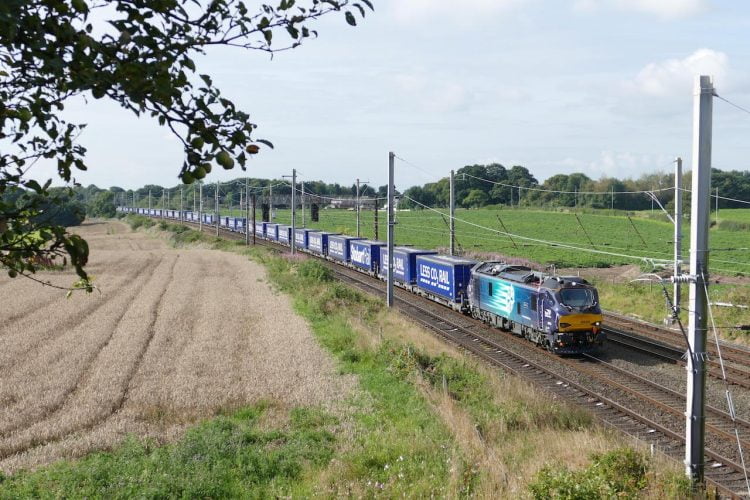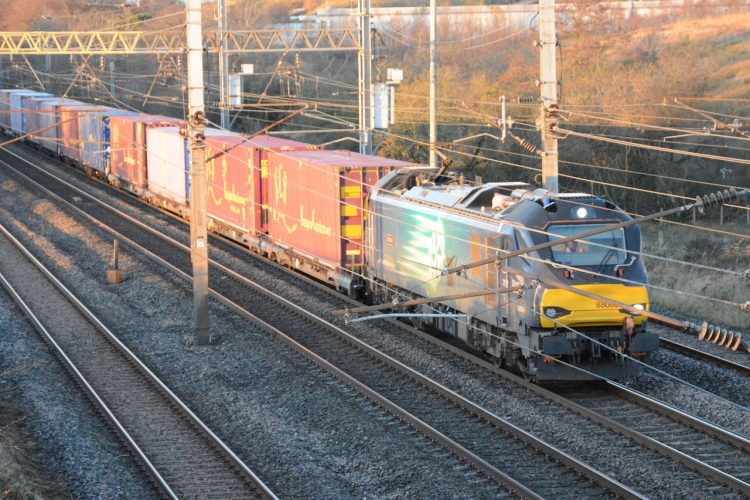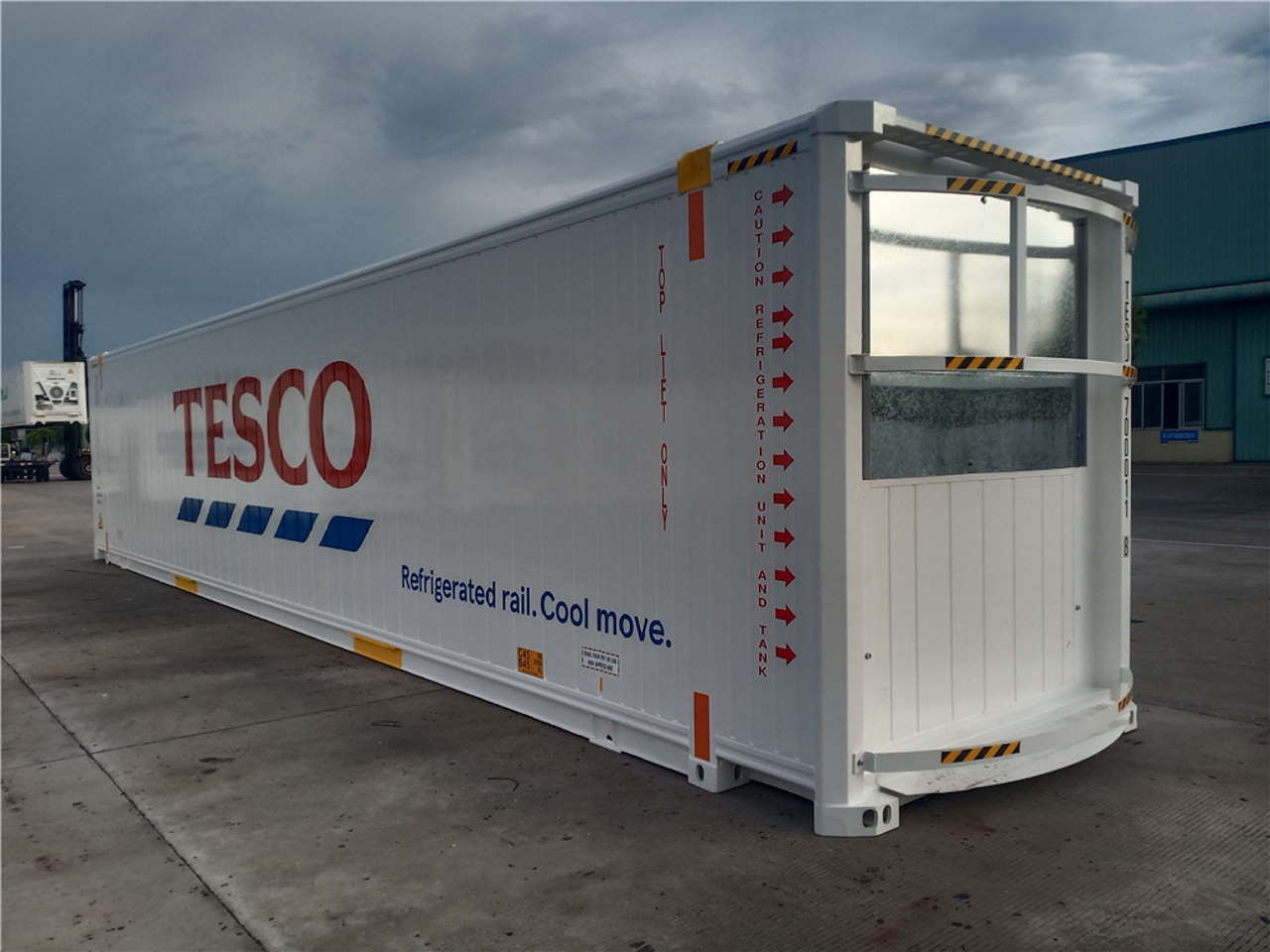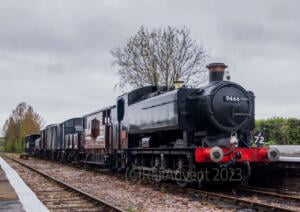A cool new service is set to be introduced to Britain’s railway thanks to a partnership between Tesco and Direct Rail Services (DRS)
The innovative new service will run twice a day, seven days a week, as Tesco uses refrigerated rail freight to distribute chilled goods from Tilbury to Coatbridge.
The goods will be moved using low CO2 rail and will mean that rail freight will play a large part in supporting Tesco in providing Christmas goods this year.
The next two weeks will see hundreds of different products including some festive faves like sprouts, parsnips, carrots, onions, oranges and lemons delivered in time for Christmas dinner.

The use of rail freight comes with huge environmental benefits and each of DRS’s 415-mile journeys for Tesco will use Class 88 bi-mode electric locomotives which run on electricity and create zero exhaust and greenhouse gas emissions.
The service will mean that a minimum of 17,000 containers are taken off of the road each year which saves Tesco a huge 7.3 million road miles and equates to almost 9,000 tonnes of CO2e.

Jason Tarry, Tesco UK and ROI CEO said: “We’ve been using rail to transport our goods since 2008 and this new service reflects our continuing commitment to rail which has clear advantages for our business, our customers and the planet. Our rail service will be an important part of our efforts to deliver a fantastic Christmas for our customers but the journey doesn’t stop here as we continue to increase the number of containers we transport by rail as part of our commitment to reach net-zero emissions in our operations by 2035.”
Chris Connelly, NTS Deputy CEO and Rail Director, said: “This is fantastic news, not only for DRS and Tesco but also for the environment. This is an example of how rail can play an integral part in the race to net zero. Each train will remove around 40 lorries from Britain’s roads and we’re running two trains a day, seven days a week, saving 9,000 tonnes of CO2e a year. We’re thrilled to be working with Tesco on this new service, helping them drive down their carbon footprint as they deliver for their customers throughout the UK.”
Rail freight provides 76% less CO2 emissions if compared to road, also connecting with other rail operations throughout Europe via Tilbury Forth Ports means that fresh produce can be distributed with a substantially reduced carbon footprint.
Tesco is set to increase their use of rail freight further in order to meet its commitment to net zero-emission in their own operations by 2035. During the last year, the supermarket has seen an increase of almost 50% in the number of containers used for produce destined for stores transported by rail.






Responses
I’m all in favour of transporting stuff by rail, even if trucks still have to be used to finally get the stuff to the shops. However, the claims about “zero emissions” are a bit specious. Assuming the railway gets its electricity from the National Grid, then the electricity will have the same mix of generation as for everyone else – and that is predominately from natural gas.
Also the article doesn’t tell us how the refrigeration units are fueled. Is this also by electricity taken from the overhead wires? It doesn’t look like it from the picture and I suspect the refrigeration will be diesel powered. Railfreight is definitely more environmentally friendly than lorry freight but I wish it wasn’t so over-sold.
The reefers would be fuelled by the same means regardless of how they travel. An electric hauled train like this produces no pollution at source and, as you rightly state takes power from the grid, but still produces far less pollution, reduces congestion and doesn’t contribute to the 1000 deaths on the roads a year attributable to HGV’s
Also Tesco also has wind and solar farms that contribute more energy to the National Grid than the company uses.
More fantasy from the trainspotting community. How do the goods moved by rail get to the destination?
The railway system is famous for strike action at the drop of a hat .
Trust trucks to deliver to the door, Thomas the tank engine is not really required.
Read the story – they are transporting goods from Tilbury (London) to Coatbridge (Glasgow) keeping 17,000 containers off the motrorways and roads per year.Well done Tesco. Wish more companies were doing this.
There haven’t been any strikes in the rail freight sector for decades!
You’re living in the past, trucks account for 1000 deaths on the roads each year and a lot of pollution and congestion, and in case you hadn’t heard there’s a shortage of drivers. Tesco aren’t doing this for fun, they now run around 18 trains a day taking thousands of trucks of the motorways allowing truckers to spend their time doing the short haul.
Trust trucks to deliver ? Not really. The M1 local to me was closed from 03.00 until lunchtime yesterday, major delays, and major congestion on surrounding roads. It happens often nowadays on the motorways. Well done Tesco and DRS.
True. Shutting the whole motorway seems to be the norm for the Highways Agency nowadays
Well doe TESCO for showing innovation and commitment, leading other supermarkets by your example!
It surprises me that Asda haven’t done this yet. They move a lot of stuff by rail on W H Malcolm’s trains and must move as much product around as Tesco do.